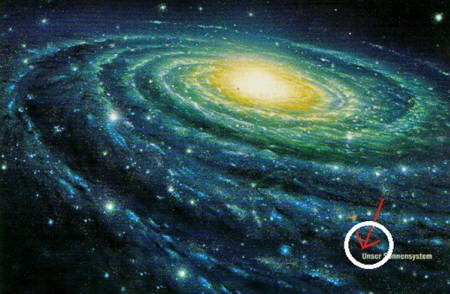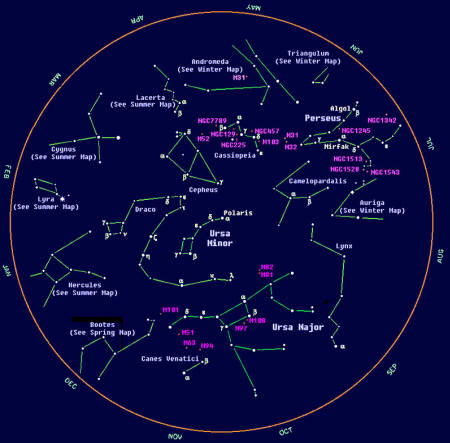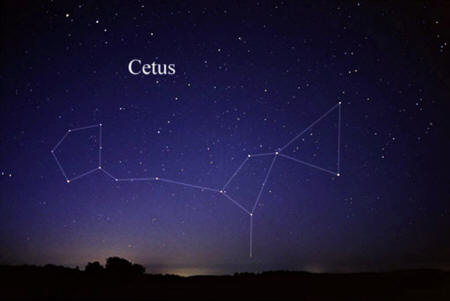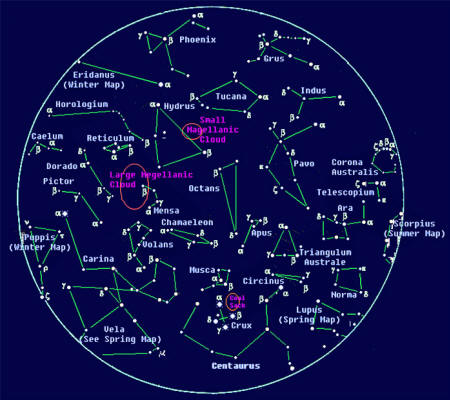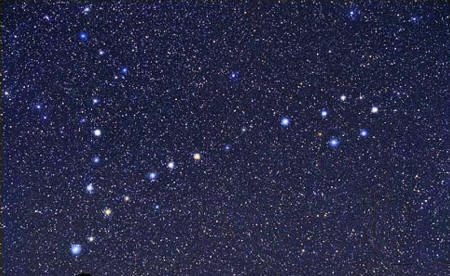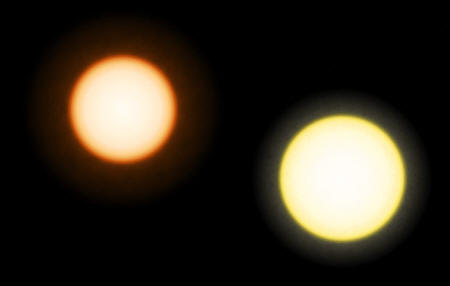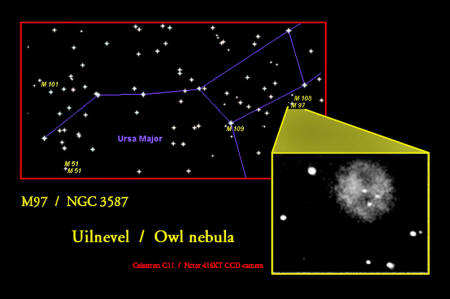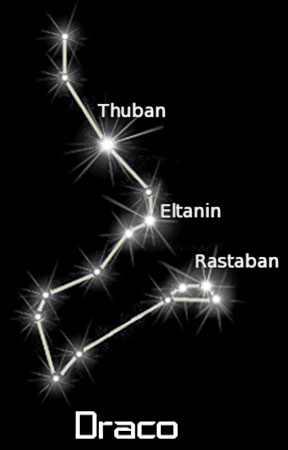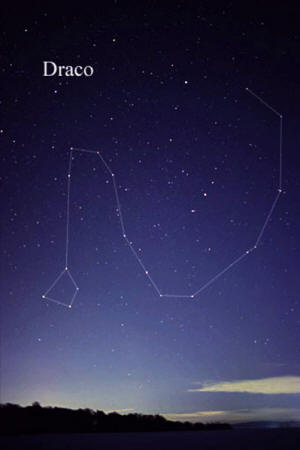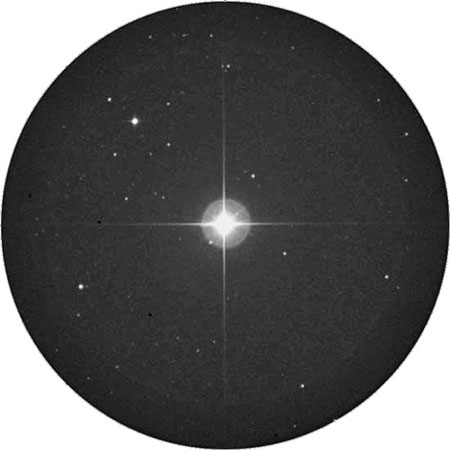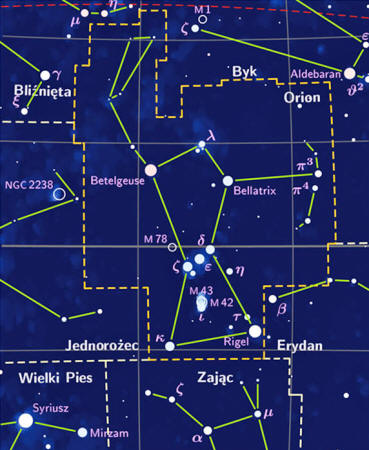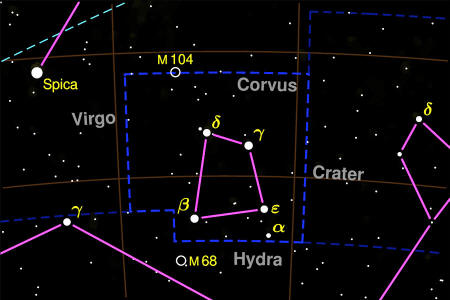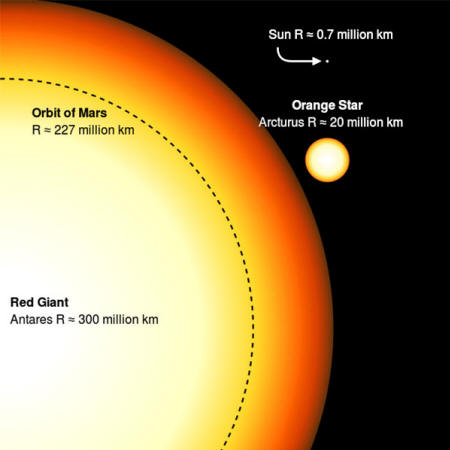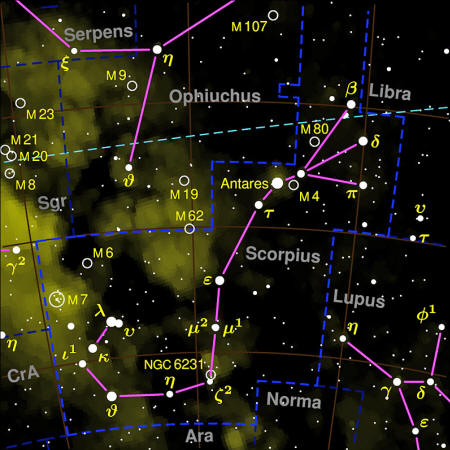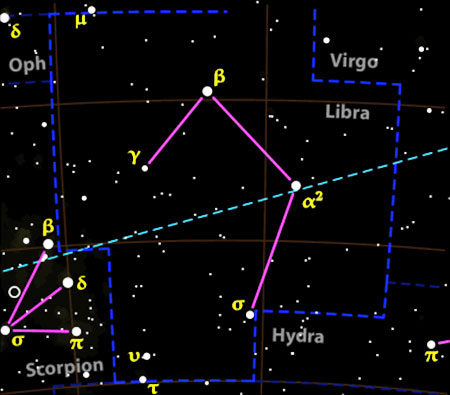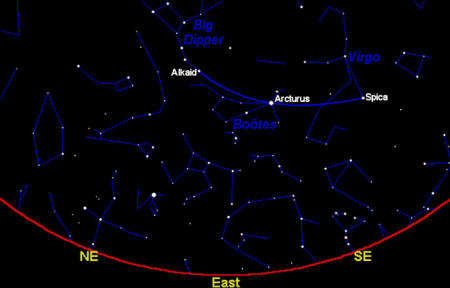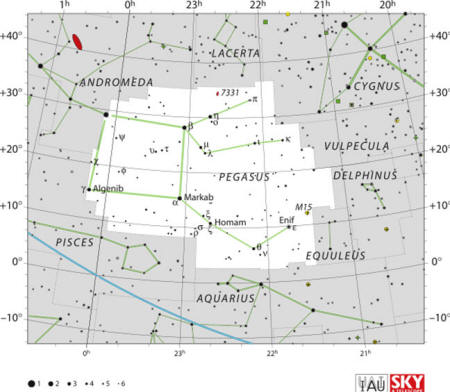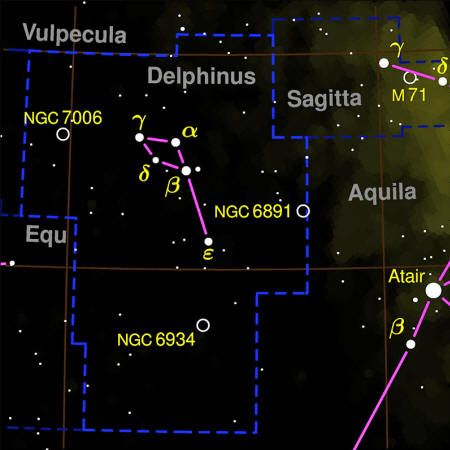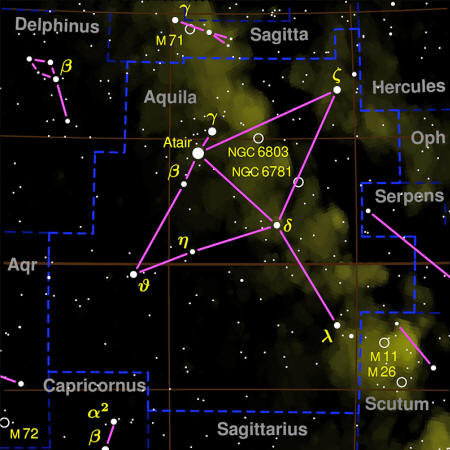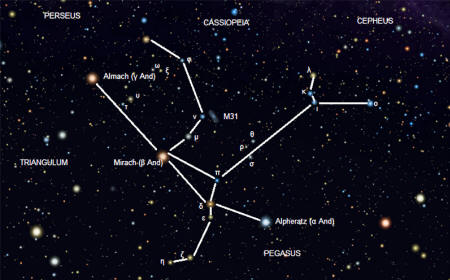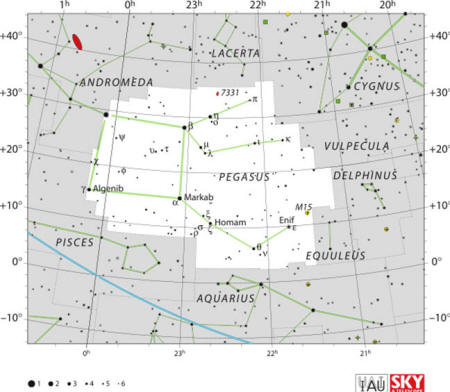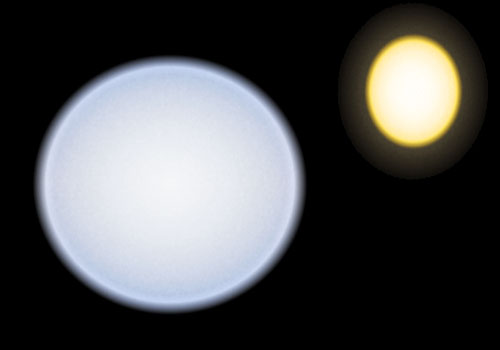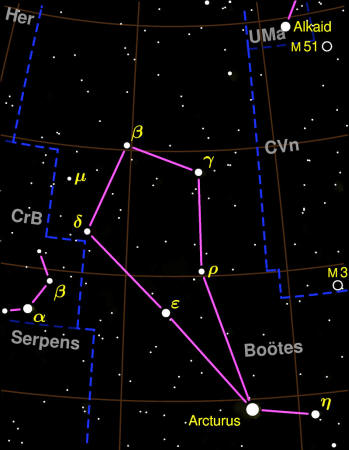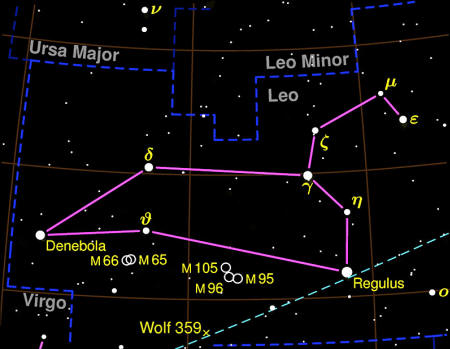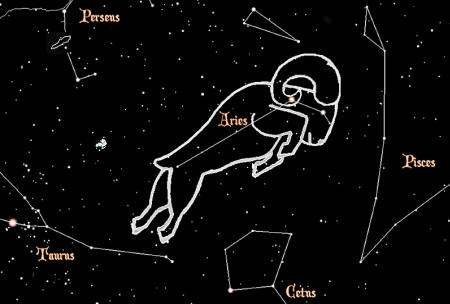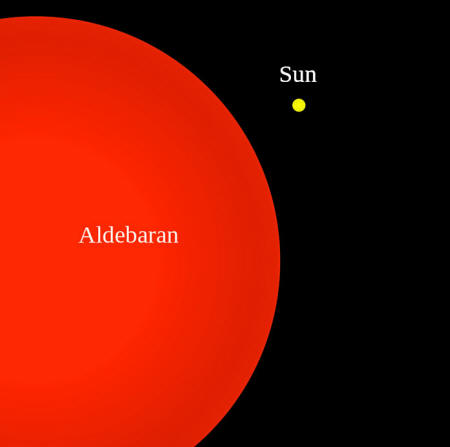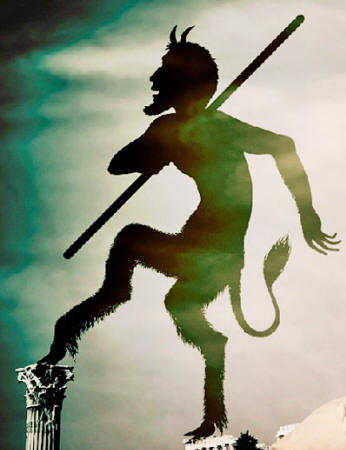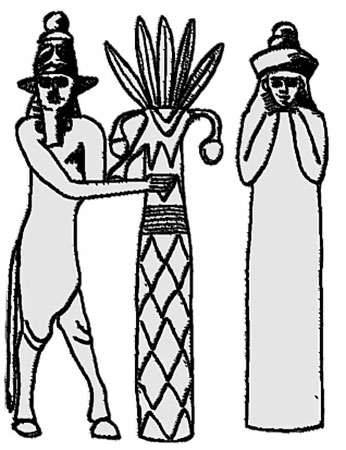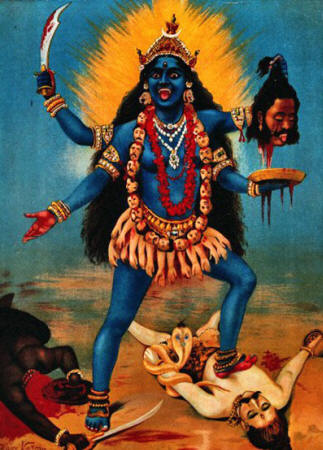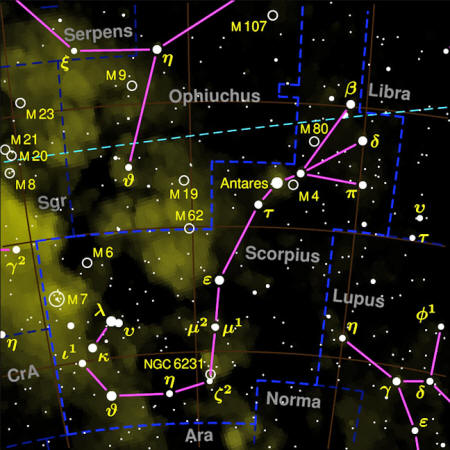|
October 26, 2014
from
WesPenre Website
We discussed this subject in
Level IV to
some degree, but now we want to look at it from a Vedic perspective
and sometimes also from the perspective of other ancient texts in
order to compare and envision where there may be some correlations.
Instead, I will repeat some of the information from Level IV, but also add some material to it, and then, as soon as a previous star systems from Level IV has been reviewed, I will reveal the Vedic counterpart. This way, the reader, whether or not he or she has read Level IV, can compare the information from the two levels of learning and be able to see the correlation.
This will make a longer paper, but I
hope and think that it will also make a more interesting read.
We see saucer-shaped UFOs in the skies,
as well as cigar-ships, triangular ships, and many other different
geometric shapes and forms, but the attitude from some is, why does
it matter where they come from?
Of course, the records may not always tell the truth, and even if they correlate from one ancient text to another, they may still have been edited, or the information was wrong to begin with.
Although this is always a dilemma, we may also ask ourselves why they would lie about their origins or whereabouts.
From researching this subject for a number of years now, it seems to me that the Alien Invader Force (the AIF) is proud of their domains and what they have conquered.
Hence, if you ask me, I would say that we probably can generally trust the records in this case, albeit they may also "brag," and say they conquered more space than they actually did, but again, when looking at it in context, it paints a picture that, to me, seems fairly correct.
However, before we eagerly dig into
this, we need to look at the term 'Nakshatras.'
As it says here,
Now we also learn that there are 27 or 28 sectors along the ecliptic, and each sector is dominated by a prominent star.
I dare say that these prominent stars are the stars inhabited by the AIF - they are the star systems they have conquered over the eons. Some belonged to the Orion Empire before the invasions, but not all of them.
Others were just invaded because they
were good strategic outposts. Some say that our solar system, Sol,
was invaded because of its strategic position in the middle of
Pesh-Meten, the "business- and trade route in Sector 9," but we know
that there were other reasons as well.
In modern terms, astrology is the position of the stars and their asterisms, which are supposed to determine our present and future.
We mention stars and planets in
association, but what about the "Lords?" Apparently they had a lot
to say about it in Vedic time, so why not now? I just want to
mention that there are many ways to manipulate a human.
Let us take a look at what that is.
The Nakshatras or Nákṣatras (lit. "stars") are the Indian form of the lunar mansions.
They usually number 27 but sometimes 28 and their names are related to the most prominent constellations in each sector. They start from a point on the ecliptic precisely opposite the star Spica (Sanskrit: Chitrā) and develop eastwards. In classical Hindu mythology, the creation of the nakshatras is attributed to Daksha.
They were wives of Chandra, the moon god. The nakshatras of traditional bhartiya astronomy are based on a list of 28 asterisms found in the Atharvaveda (AVŚ 19.7) and also in the Shatapatha Brahmana. The first astronomical text that lists them is the Vedanga Jyotisha.
The mansions are important parts of
Indian astrology. [3]
We may, in a later discussion, bring in
"Lunar nodes" however, but I will explain when that time comes.
I will normally explain in Sumerian/Akkadian/Greek/Roman/Egyptian/Arabic
terms first - or any of these six ancient mythologies, followed by
the Vedic ones, in order to make it easier for the reader to follow
and not having to go back and forth between Level IV and Level V.
II. Star Systems and
Constellations in Domain of the Orion Empire
Fig.1 The Milky Way Galaxy and the part
we are covering in
these papers (with a few exceptions).
but the white circle
covers pretty well the tiny bit of space Although it doesn't look like much,
the circle covers
many, many light-years.
If we look at our own galaxy, the Milky Way, for example (fig. 1), we see the circled area.
That's approximately the section of the galaxy that we are covering with our constellations - it's a mind-blowing small part of the Universe. Especially as there are billions of other galaxies similar to ours out there (and this is just in the 4% Universe).
Essentially, we know very little, or
next to nothing, about what is going on in the Universe outside the
white circle in fig. 1.
Cetus
Cetus refers to a "sea monster" in Greek mythology. Today, however, we call it "a whale."
This constellation is located in the part of the sky that contains other water signs, such as Aquarius, Pisces, and Eridanus. [4]
Fig. 2
The Constellations in
the Northern Hemisphere.
Another association comes directly from the Bible:
Constellation of
Cetus.
The Constellations of
the Southern Hemisphere.
The belly of the huge fish, also associated with a whale, is a metaphor for a female womb. What womb are they talking about? Any womb? No, I would suggest they are talking about the Womb of the Mother, just as Artemis is referred to as the "Goddess of the Hunt" as well as the "womb." [7]
Also, in the reference to Cetus in Wikipedia, it says that,
This links Cetus with Pisces and Orion (the Hunter).
The most prominent star in Cetus is
Mira, which is a red giant, located 200-400 light-years from Earth.
[9]
When we look at the constellation of Pisces from a mythological standpoint, we soon find that it is related to Poseidon/Neptune, Vishnu, Christ, Aphrodite, and Eros.
These gods are all epithets of En.ki.
However, when we backtrack and take a look at the Sea monster in Cetus, we see that Mother Goddess was already associated with fish before the AIF did their claim, and the male aspect of the monster, Typhon, was on the side of the Titans and therefore also Orion.
Thus, I would say with quite some
certainty that this star sign was hijacked by the Patriarchs
sometime after Lucifer's Rebellion, and at least to some degree
belongs to them at this point, and a rewriting of records took place
somewhere along the line. Fig. 5
Constellation of
Pisces.
Al Rischa is its brightest star, and is
a white A2 star, 139 light-years away.
Eridanus
Eridanus is another water-sign, represented by a river - usually the Po River in old Greece. It's placed to the south of Orion's foot, and its name comes from being Orion's "footstool."
Eridanus is yet another constellation that was taken over by the AIF - either during the original Wars in Heaven or later in history.
[Artist's impression]
Epsilon Eridani b – a
real planet found orbiting star ε Eridani.
The star we are perhaps most familiar with is Epsilon Eridani, only circa 10 light-years from Earth. In Ufology, we often hear that star races who are visiting Earth or have visited Earth in the past are from this star system.
Interestingly enough, astrophysicists
have found that Epsilon Eridani has
exoplanets orbiting its orange
sun [11] (see fig. 6 and fig. 7.) Fig. 7
[Artist's
impression] View from one of Epsilon Eridani b's imaginary moons
Relative sizes between our sun (right)
and ε Eridani (left),
and the difference in colors.
Ursa Major (The Big Dipper, The Great Bear Constellation)
This has been a major Sector 9 domain for the Orion Empire.
The "Bear," as we know, is associated with Mother Goddess. Also, according to our Vedic expert, Richard L. Thompson, the Big Dipper plays an important role in the Vedic texts. This is also, according to some, where the real "Seven Sisters" are located - they are the seven main stars that create the Great Bear Constellation.
The Seven Sisters represent the
Seven
Dragon Queens, who are the "daughters" of the
Queen of the Stars
Herself.
ii.i. The Orion Empire in the Vedas
Let's start with the Owl Nebula (fig.
9.) Fig. 9 "Messier 97" (M97) or "New General Catalogue 3587" (NGC 3587) [12]
The Owl Nebula.
The Owl Nebula is located next to the star Dubhe - Alpha Ursa Major, which has a huge impact in the Vedic tales - something that is acknowledged by the Vedic expert, Dr. Richard L. Thompson.
According to his research, the Rakshasas were descended from the celestial Sage Pulastya, whom apparently lives on one of the stars in the Big Dipper (Ursa Major) constellation. The Big Dipper in Sanskrit is Sapta-ṛṣi (Seven Sages).
The Sages were said to be roughly human in shape and form with huge stature, great muscular strength, and frightening facial features, which included prominent teeth and pointed ears [13] (another race with pointed ears and of huge stature were the Vulcans from the star system Vega - Mother Goddess' Helpers when Planet Earth was seeded.
We are also used to hearing about creatures with pointed ears in our fairy tales. Little do people know that these fairies and creatures in our children's books are based on real creatures from out in the Universe).
Some also describe the Rakshasas as
short and quite wolf-like, albeit walking on two legs (similar to
how I described the Sirian race in Level II - they and the Rakshasas
may be one and the same species that has migrated over time).
Now it starts to get quite interesting.
We know that the "Bear" is closely related to Mother Goddess, and here we have it in Arabic. We also have a reference to the "Eye," as in Yoni, the "Eye of Creation."
Let's move on, and we'll get to the Vedas:
Thus far, the Owl Nebula and Ursa Major
both belong to the Orion Arm of the Milky Way Galaxy, but stars
change locations, and Ursa Major, the "Great Bear," has always been
a very important outpost for the Orion Empire.
However, there is some.
Moreover:
If the reader recalls, the Rishis and the Sages are two terms for the same beings.
They are, among other things, the scribes, who wrote down exactly what the first generation of Olympian gods told them. They were considered very wise and didn't like confrontations, such as in battles and in wars. They were more artistically oriented, according to the Vedas. Rishis and Sages are of course also terms, like so many others, that were "borrowed" from the Orion Empire after the "Devas" had invaded.
The equivalent to Rishis exist in Orion
as well, but perhaps not as scribes - probably more as teachers of
sorts.
Aditi, who is Vishnu's mother, and in Hinduism is the most prominent name for Mother Goddess, mentioned almost 80 times in the Vedas, but no hymn is dedicated to Her, although She is mentioned in some of them.
Very little is said, which only makes
sense, but we have at least managed to see a link between Orion and
the Divine Feminine in the Indian texts.
III. Domains
Conquered by the AIF with Marduk in Charge
First, the star systems and constellations that Marduk seems to control are much fewer than the ones taken over by En.ki. Also, those over which En.ki controls are sometimes shared with Marduk.
In fact, that is how I believe it was done - regardless of whom the AIF invaded, En.ki's DAKH warriors were the ones doing the job. Often En.ki himself controlled the troops, and sometimes he passed the command over to Marduk.
On occasion, En.ki simply let his son take command over a certain star race, star system, or asterism.
This is why it seems that we must
distinguish between the ownership of En.ki and the ownership of
Marduk when it comes to certain stars and constellation. In reality,
the two probably often shared ownership and command in many cases.
I want to begin with the star system that is most obviously Marduk's domain.
Draco
Here we need to distinguish for those who are not that savvy in astronomy, astrophysics, and astrology.
Draco is the star constellation itself - the asterism - while Alpha Draconis, or Thuban, is the alpha star in the Draco Constellation (see fig. 10.) The north pole of the ecliptic is in Draco - thus, Draco can be seen all year round will.
Draco with Thuban, α
Draconis, on top.
They are supposedly visiting us here on
Earth, are most commonly known as
Dracs or Dracos, and wouldn't
hesitate to kill humans. They are also famous for raping human
females and sometimes make them pregnant. They are usually huge in
stature and tremendously strong.
What people have experienced and seen
are their experiences, and I am not going to invalidate them, but
again, we have the shapeshifting phenomenon to take into
consideration, understanding that an interdimensional star being can
take on any shape and form he or she wants. Fig. 11
Draco, as it can be
seen by the naked eye.
However, Draco was invaded a long time ago which was discussed in Level II and Level IV, and many of the original inhabitants of the asterism were brutally slaughtered by the AIF in a horrendous war. I know for a fact that this war took place, but at this point, I have very little details about what really happened other than that eventually the resistance broke down, and the Draco Headquarters in the Thuban star system was defeated.
The few survivors of the original population, just as here on Earth - if we compare with the Namlú'u - were taken as prisoners and made into a slave race. This was a highly developed race before the AIF invaded and a space-faring race as well.
They were also, in general, highly dedicated to the Orion Empire and its values. Hence, the Dragons who refused to become slaves were tortured and killed (unless they changed their minds), and a small minority started working for the AIF, as "Minions."
Marduk was given this star constellation
as a reward from his father for being a great strategist (two
warlords patting each other's backs). This is the picture up until
this day. [18]
Minerva is the Roman counterpart to the Greek goddess Athena [20] and also an Olympian goddess, indicating that she was an ally of the AIF.
In fact, we have the mythology to prove it as well.
Athena, at first, is Ishtar, depicted with her owls.
She is also Inanna, Isis, but foremost, Queen Ereškigal, as we have discussed earlier. There are others who have made the same conclusion, such as Ellie Crystal of Crystalinks.com - a well-respected database on mythology, UFOlogy, mysteries, spiritual matters, and conspiracies.
The webmaster says, "Ereshkigal was also Inanna and Ishtar…" [22] and then she shows the evidence later on her page.
What I managed to prove in Level IV was that Ereškigal took over the persona of the goddess with many names:
In other words, it was the infamous Ereškigal who helped "slaying the Dragon" in the Draco constellation with the rest of the AIF - or the Olympians, if you will.
Just for
the record, Ereškigal thus had a key role in the destruction and
takeover of the Draco Constellation. However, she didn't seem to be
given any control over it, unless she is in charge of one or two of
the smaller star systems in Draco.
Albeit it is not the brightest star in the constellation, it still got the Bayer designation Alpha Draconis - mostly because of its former position as the pole star, but perhaps also because of a more subtle reason, being the Headquarters of Marduk's Draco Constellation.
Marduk and Ereškigal are consorts today,
from what it seems, and therefore, it is also likely that the Queen
of the Underworld has some authority in that region of space -
albeit, as I said earlier, we have little evidence of that.
Fig. 12
Thuban, α Draconis.
We can see the answer to that question here on Earth as well when we study Guerilla warfare. It is often harder to defeat an "invisible" enemy such as a guerilla group than it is to fight a legion of soldiers in open battles.
This is also exactly what happened. Lucifer had planned these strikes for a very long time before he executed them, and once he attacked, he did it with guerilla warfare in mind. The Orion Empire, which was totally unprepared for such a treasonous act, lost control over the situation, and Lucifer's allies managed to do more damage than can be imagined before the Empire eventually stabilized itself from the shock and managed to strike back.
Not until then can we call it a "war."
Before then, it was simply strategic invasions, similar to when Hitler invaded Poland in 1939. After the initial shock, the real war started, and it hasn't stopped since.
Some say it will not stop until one of the two Empires is destroyed. Although this whole thing started quite badly for the Orions, they are now confident that Lucifer and his Empire will fall and be destroyed but the problem is that many star beings - including humans - will lose their lives before it's over.
In addition, how many star systems and
entire constellations will perish before peace will come? No one has
the answer to that.
It's distance from Earth is a little more than 300 light-years, although all these distances are just for the record - they don't really mean anything, especially when space travel from one point in space to another can be instantaneous for a star race that masters nano-travel. If they don't, there are Einstein-Rosen bridges to use.
Ridiculously enough, I just read on a
scientific website that astrophysicists now claim that there are no
such things as black holes anywhere in space, but that's a
discussion for another time - just something I wanted to mention in
passing.
...and more.
Again, it's irrelevant because most of them are able to let their avatars shift shape and form as they see fit.
There are no giant Reptilians walking around in Pentagon. Yes, there are probably beings from Draco there, but you and I wouldn't be able to distinguish between them and the rest of the humans who work there - at least not by their looks.
Those of us who have some background knowledge might be
able to notice something "alien" about them, but it would be rather
subtle, if any.
On occasion, we do see humanlike figures with crocodile heads in Egyptian and Sumerian artifact.
For the most part, however, I'm sure
that star beings were depicted in such a way only to emphasize which
constellation they originated from. It didn't necessarily have
anything to do with how they looked like. I seriously doubt there
were any "crocodile-headed aliens" walking around amongst humans in
ancient times - it's a matter of metaphors.
I have not completed much research into other mythologies, such as the Mayan, Aztec, Aborigine, Native Americans, Native Canadians, Scandinavian, and others. That may be something for the future because this level of learning will be long enough just to scratch the surface of the Vedas.
Hence, I think it would be best to turn our attention to the Vedas to further show where Marduk has his responsibilities, aside from being "Lord of the Earth", or "Satan," or whomever.
(Like when Lucifer/En.ki is too busy
elsewhere to use the title Satan. Some people have asked me if there
is any comparison between the myths I've been researching and the
beings in the Urantia Book when it comes to Satan and Caligastia,
the "Devil." In a sense, we can see Lord En.ki being Lucifer and
Satan, while Marduk is Caligastia, the Devil who is Satan's emissary
on Earth).
There will not be a Sixth Level of
Learning. I am saying this so that the readers don't misinterpret me
and get false hopes (or nightmares, depending on what attitude they
have toward the papers).
In the Hindu religions there is a relationship between Draco and alligators, as we can see in the following reference.
Then, if we follow the trail, Shi-shu-mara shows to be the Hindu equivalent to the Egyptian god Sobek, or Sobek-Ra, which of course caught my interest further due to the Ra connection.
When I look up Sobek I find the following:
The "primary sun god, Ra" in Egypt is,
of course, no one else than Amen-Ra, or just Ra - both being Marduk.
Don't let us get fooled when told that the Goddess' Empire is called the Orion Empire.
One of the major outposts of the Queen's Empire in this Galaxy is located in Orion's Belt and in the Big Dipper (Ursa Major). I have explained this before, but just to be clear - the Empire has very little to do with Orion per se because it spans all over the Universe and into other universes as well, which is not so strange when we know that She (or Her "Higher Self") is the Creatrix of them all.
I am reviewing this so that the reader
will understand how the AIF can be in control of
Betelgeuse, the
Super Giant star in the constellation of Orion. Even people who are
not savvy in astronomy have probably heard the name of this star at
some point in their lives.
The star is expected to turn into a supernova in the next few million years. Whether that will happen or not, I would suggest is probably more in the hands of non-celestial forces than natural forces.
Also, we have a tendency here on Earth
to think of events as linear when they are not.
Betelgeuse and the
Orion Constellation.
Notice also that we have the star system
Taurus (which includes the Pleiades) in the northeast, with the star
Aldebaran not too far away. This was the star that Lucifer fled to
after he was cast out of the Orion Empire.
Corvus is an asterism that may not be as well-known as Orion and Draco, but in a way, it's just as interesting. This constellation belongs to the Southern Hemisphere and is Latin for raven or crow.
Again, we have an association to the
Bird Tribe. Fig. 14
The Corvus
Constellation.
In fact, these four stars in Corvus, controlled by Surya [28] (the Vedic names for Marduk) are also called Spica's Spanker, or "the Sail," [29] with gamma and delta pointing towards Spica. Thus, we can imagine that Corvus has some significance to the AIF - again, most probably a strategic one.
Delta Corvi, also called Algorab, is a double star. Algorab means Raven. [30]
In Greece, the Corvus asterism is
associated with Apollo, [31] who in Babylon was called Marduk (all
this makes it obvious who is lurking in this asterism).
Alpha, Sigma, and Tau Scorpius
Scorpius is a large constellation in the Southern Hemisphere, close to the Galactic Center in the starry night sky.
The most recognizable star in this asterism is probably α Scorpio, more commonly known as Antares, a red super-giant of spectral type M1. We have discussed Antares in other places, and I have previously showed the reader the following picture, but it never ceases to amaze me - it's a comparison in size between our own Sun and Antares (fig. 15 below.)
In Egypt it was the symbol of Isis in
the pyramidal ceremonies [32] - Marduk and Isis were lovers for a
while, as discussed in Level IV (if we can call a rape/victim
relationship a lover relationship. However, we're dealing with
perverts, so anything goes). Fig. 15
Comparison in size
between the super-giant Antares and our Sun. Arcturus,
Someone, when a situation gets heated,
may blow up a star - things such as that happen! Fig. 16
The Scorpius
Constellation.
If we once again look at fig. 16 above, we can see the Libra Constellation next to Scorpius.
These four stars in Libra are jointly
ruled by Lord Indra and Lord Agni - "Chief of the Gods" and the "god
of Fire," respectively.
Three of these 6 planets are considered being good candidates for life. [36] Gliese 581 d and g [37] are the most promising candidates, we are told, while Gliese c is considered to be the first earth-like extrasolar planet within its parent star's habitable zone.
The star, Gliese 581 does not have a Greek letter in front of it from what I have found, so I am therefore not sure to whom this star system belongs, but it's quite likely that it is under control of the AIF.
Gliese 581 is located 22 light-years
from Earth and is a red dwarf star of spectral type M3. It is
therefore smaller and colder than our own sun.
Fig. 17
Heart lighter than a
feather.
Many are aware of that in Egyptian mythology (but also in the Sumerian and Babylonian texts, etc.) the scale in not only referred to as "justice," but is also a reference to the Afterlife.
We learn that when we meet our "Maker," this being decides where we are going next depending on whether our heart weighs lighter than a feather. If not, we have not lived an ethical and moral life (read "obedient life"), and we will not go to Heaven.
In Egypt and Sumer/Babylon, this task is executed by the Sun god or his cohorts.
Utu Shamash is, as we all know by now, the equivalent to Lord Marduk, the ultimate Sun god.
In the Vedas, as I mentioned above, he is, in this case, referred to as Indra, who is in charge of the previously mentioned four star systems in Libra.
Also, we are told that,
Fig. 18
Libra. Because there
are only seven stars showing of the Libra Constellation
Spica
The star Spica, from where the ancient Galactic Wars may have originated, is also controlled by Marduk, or Tvastar, which is one of Shiva's Avatars in the Hindu texts.
Spica is the brightest star in the Virgo Constellation, and the 15th brightest star in the night sky. It's a blue giant of spectral type B1, approximately 260 light-years from Earth. In fact, it's a binary star system, and it's b-component is also a blue giant, only slightly dimmer than the main star.
Spica B is of spectral type B3.
The following curious fact, we learn from looking up Spica in Wikipedia:
I was told by the Pleiadians, whom I was listening to a few months ago, that it was the "Anunnaki" who brought wheat to Earth so we could start agriculture.
Apparently, we learn from the above quote that wheat may have been brought to Earth from the Spica star system.
The question is, in that case, was it
brought here by the AIF, or was it brought here by the Queen and
Ninurta before the Invasion of Earth, when Spica belonged to Orion? Fig. 19
Spica in the Virgo
Constellation.
Polaris (known as the Polestar) is the brightest star in Ursa Minor and is a yellow-white super-giant of spectral type F7, located 325-425 light-years from our solar system.
It is listed as Alpha Ursa Minoris. Beta Ursa Minoris is only slightly fainter, being an orange super-giant of spectral type K4. It normally goes under the specific name Kochab. Kochab and Pherkad (Gamma Ursa Minoris) are said to be the "Guardians of the Pole," or "the Indestructibles." [41]
This, I'm sure, has a real story behind
it. Planetary systems have been found in four stellar systems [42] at
the time of this writing on October 18th, 2014.
Just as Ursa Major is often referred to as the "Seven Sisters," so is also Ursa Minor - both constellations having seven stars building the patterns (thus we have three constellations with the nickname "Seven Sisters;" The Pleiades, Ursa Major, and Ursa Minor).
The seven stars of the Little Dipper were said to be the daughters of Atlas - the Titan from where the continent of Atlantis stems, meaning the "island of Atlas." [43] He has also given his name to the Atlas Mountains. [44] As a curiosity, the Atlas here mentioned is not, according to Plato, the same Atlas who was a King of Atlantis.
The King of Atlantis with the name Atlas
was the son of Poseidon, [45] who was the first King of Atlantis.
This would make Atlas Marduk, son of Poseidon/En.ki.
Today, Ursa Major is more so than the Little Bear, which was taken over in a series of battles in a long gone past and is now given to Marduk by his father, En.ki, to control. This was a major achievement by the Alien Invader Force and a blow against their archenemy - Mother Goddess and the Divine Feminine.
It is my guess that if Orion would like
to get back what the AIF has conquered, Ursa Minor is quite high on
the list.
We find such a hint in MUL.APIN, which is,
It contains a long list of stars and star constellations with references to the different gods and goddesses of old.
It seems to be, as somebody said on Graham Hancock's forum,
One of the lines says:
The first ranking son of "Anu" is of course En.ki, who is here referred to in association with Polaris in Ursa Minor.
I am fully aware that En.ki was the one who first took control over the Little Bear, just as he was the one who took control over our own solar system, albeit it was done in a bloody coup in which Marduk got most of the credit from being the one who slaughtered Tiamat.
In this case, En.ki gave Ursa Minor to Marduk after En.ki himself had it under his control.
One story that tells us how it happened was when Damkina, the equivalent to Lilith, Inanna, and Isis, gained control over Ursa Minor. Isis was then copulating with En.ki in order to create a new human hybrid species after the Great Flood, approximately 11,500 years before the Common Era.
When En.ki became sterile, his son Marduk took over the breeding program. Then, when Isis managed to escape, Queen Ereškigal became the female part of the breeding program and has been ever since.
She also became in charge of Ursa Minor together with Marduk, simply kicking Isis off the throne of the Little Bear.
Another name for Damkina was Damgalnuna.
We see here the same old mistake that I have pointed out several times - namely that Isis/Inanna was never a consort of En.lil, but is instead Prince En.lil's daughter.
In the Akkadian Empire, Isis becomes Damkina, consort first to En.ki and then to Marduk.
There is a reference to Isis and Ursa Minor as well in MUL.APIN.
Now, how can we find a correlation between the AIF and Ursa Minor in the Vedic hymns? Is there any such association? Yes, there is!
For example, we have one in Bhagavad Gita:
These names may be unfamiliar with the reader for the most part, but there is one of these names that we have encountered before, namely Kashyapa, whom we discussed earlier being an Avatar of Vishnu.
With the risk of being repetitive, Lord Vishnu is En.ki's counterpart.
The "seven great seers" are the seven Rishis, or Sages, who lived in the time before the Flood, and were the builders of Uruk, [52] corresponding with the seven stars in Ursa Minor. Kashyapa/En.ki is listed amongst them, seemingly because he is considered a "teacher," and the "keeper of wisdom."
As such, he probably sees himself as a
Sage.
Here are two other stars, also under Marduk's regime.
It is stated in the Nakshatras that the Lord of these two stars is Guru (Jupiter), and Jupiter is, as we know, the Roman name for Marduk. He is also listed as the deity under the name of Ajikapada - a name we are not yet familiar with.
Again, however, we have proof that this is Marduk, too - here from Nakshatra Purvabhadrapada - the Former Happy Feet, which is an interesting reference because in the Nakshatra, Alpha and Beta Pegasi are called Purva Bhadrapada, "the first of the blessed feet."
The Pegasus
Constellation.
These two star systems are controlled by a deity named Mangala, whom we haven't brought up earlier, either.
Hence, let us quickly establish that Mangala is really the same deity as Marduk. Mangala is another name for Mars, [54] which is always the equivalent to Marduk, the God of War, and the deity's name can be either Mangala or Bhauma in Sanskrit, and his color is red (which corresponds both to Mars, the "red planet" and the color of Marduk).
We also learn from Wikipedia that he is the owner of the Aries and Scorpius signs, [55] which again corresponds well with my own research.
Moreover, it says that he is,
This is again correct.
At first, the "occult sciences" were taught by En.ki already in the Garden of Edin, but when Marduk became the "Lord of the Earth," he became the Grandmaster of the secret societies - something I know many high level occultists will acknowledge as well.
Moreover, Bhauma is the god of war and is celibate! Well, the latter is, of course, not true, as we all know, and probably thrown in there in order to muddy the waters. Furthermore, his mouth is that of a ram (another association with Marduk).
The Moon and Jupiter are both "friendly" to him, and he rules over blood, muscles, and bone marrow [57] (something to ponder!). The above list of attributes are all associated with Marduk (except for the celibate claim), which makes it evident that Bhauma/Mangala is the equivalent to Marduk.
The dolphin (Delphinus) is also said by
some to be associated with the Sirius star system. Fig. 21
The Delphinus
Constellation.
The name of this star is probably known
by quite a few readers. It's one of those that is sometimes
mentioned in different medias for various reasons.
In this case, it would probably be a good idea to emphasize the "way of the gods," and the "liberation from rebirth."
This has to do directly with war and soldiers. Going to war was an honor in the old Hindu traditions. Successful warriors, who had survived many battles and actually managed to grow old without being killed, often took their own lives when they became old and couldn't fight anymore. By doing so, they thought that they could achieve "liberation from reincarnation."
They were "wasting away" their bodies to attain liberation. [59]
The Indian warriors, due to their belief system, were unafraid to die. Going to the battlefield meant death, but it also meant that the warrior was fighting well. Of course, the more skilled, the less chance that he got killed in battle - thus, for many warriors, suicide was the only way to die an "honorable death."
Even the wife of a warrior often committed ritual suicide to honor her warrior husband. [60] In juxtaposition to this, Hindu traditions do not honor suicide amongst regular people, and they warn about the bad karma it creates.
Then again,
who said that religion makes sense?
Watching over all this was Lord Ketu, which is another name for Lord Indra (Marduk):
Interestingly enough, "Ketu" is also referred to as a "shadow planet," which has a lot of impact on human lives and the entire creation. [62]
Now, what does a "shadow planet" refer to? A shadow can be said to be a mirror or something that reflects what we can see. Hence, a shadow planet may refer to a planet in the KHAA - the VOID.
Thus, it could be said to signify dark matter. Ketu also has to do with both good and bad karma. [63] It is also mentioned that people who come under the influence of Ketu can achieve great "height," particularly spiritual. [64]
If Ketu is related to the star Regulus, and those who come in contact with him evolve spiritually, and we have the Pitr connection, referring to warrior ancestors who committed suicide, the spiritual evolvement that is mentioned probably refers to the "loyal soldiers," who died in the service to the gods. These warriors may have been liberated from future reincarnations to serve other purposes in other dimensions.
A whole paper could probably be spent on research on the star Regulus alone, residing in the Leo Constellation. In this paper, we, unfortunately, only have time to scratch the surface.
If a paper could be spent on research on Regulus, a full book could be written on the Afterlife, with my own research as a base. I may very well do that one day soon. However, here is some basic information on this mysterious star.
Regulus is 79 light-years from our solar system, and is of spectral type B7, which means it is a giant, blue star. It also has three star companions and is therefore a multiple star system. In Arabic, the word Regulus means "heart of the lion."
In MUL.APIN, the star is listed as LUGAL, which means,
The Hydra Constellation in general seems to be controlled by the AIF - or was so when the Nakshatras were recorded.
I don't think that much has changed
since then. Hydra is usually compared to and represented as a water
snake, where Sigma Hydrae represents the snake's nose. [66]
The Roman god Mercury is the Greek god
Apollo's counterpart, and Apollo is, as we have learned, Marduk.
Cancer is another constellation under control of the Alien Invader Force and ultimately by Lord Vishnu.
The Nakshatras say that these three star
systems in Cancer are run by a deity named Bṛhaspatī (Brihaspati),
"Lord of Prayer of Devotion." Brihaspati is also the equivalent to
Jupiter, and/or in control of Jupiter, [68] and we know that Jupiter
is associated with Marduk.
He is also the chief,
The overseer, however, i.e. the "Lord" of this star sign, is Shani (Saturn), and Saturn is associated with Ea/En.ki.
One of the first questions that hits us
is probably, "How many gods are there?"
At one point 400 is mentioned, or 200 myriads.
This is all taken from "the Book of Enoch."
This, in other words, doesn't tell us much.
It also seems to depend on who the translator is and how he translated the texts.
Zecharia Sitchin is
more in line with that 200 - perhaps even 400 of them descended. The
commotion didn't happen because there were many gods present at one
time, but because they managed to get humans to fight at their sides
- against each other.
The rest of the gods mentioned are
regular soldiers and scientists from different solar systems, but
they were always under control by one or more of the "Bloodliners."
At first, when I took on the Vedic hymns, I was afraid that I wouldn't be able to sort things out, but to my great relief, I soon discovered that I had learned enough by researching the Sumerian texts to be able to spot En.ki's mindset to see how and where he created his Avatars and aliases.
Also, as we have access to the
Nakshatras - the Lunar Mansions - we also get an idea where they
reside, or originated from. That makes the puzzle more complete and
the threads easier to follow.
Just as I did, the reader will soon be able to see a pattern, and in the future, when you encounter a name from the Vedas that is not mentioned in these papers, you should be able to look at a few sources online, and by checking out his or her characteristics or family tree, it should be fairly easy to establish who this being is.
That, I think, is pretty cool, and if it can be achieved, which I think will be no problem, I will be very encouraged.
We'll nail them down!
We have talked a lot about En.ki and the Aquatic Bird Tribe, so let us begin with a constellation that is associated with birds.
Aquila has nothing to do with water, although it sounds as if it should. Aquila is Latin and simply means eagle. Maybe amongst some readers, who are familiar with "conspiracy theories" (I certainly don't like that word - it's become humiliating) and the Illuminati, may right away relate the Eagle to the Great Seal of the U.S.A.
If so, it is a correct association. Lord En.ki owns America!
It's not as if he doesn't "own" other parts of the world too, in his own mind, but the U.S. is probably the apple in his eye in the sense that he sees it as the New Atlantis.
Remember that En.ki, as one of his Avatars, Poseidon, was the King of Atlantis, and his son, Atlas, was his successor.
Thus we often see the Eagle associated with the United States of America. Before America, Aquila was known as the Vulture in Rome, [72] which again is quite telling. However, even in Greek-Roman mythology, this asterism was associated with the eagle, holding Zeus'/Jupiter's/Marduk's thunderbolts. [73]
Another thing of interest is that this constellation is stretching out in a way that it lies flat in the Milky Way itself, and not in the more barren parts of space. Hence, there are lots of nebulae and neighbor stars in the immediate vicinity, which makes this asterism particularly valuable.
All this is considered "resources," and
can be utilized for multiple purposes.
Also, the Phoenix Bird - the mythical gigantic bird which sets itself on fire at the end of an era in order to ring in a new era - is associated with Garuda/Marduk. [75]
It is also suggested that the Phoenix is
the symbol for ringing in
the New World Order and a One World
Government, and was the original symbol for the United States of
America, but was later changed to an Eagle. [76]
Alpha Aquilae
I believe many readers have heard of this star, and there are rumors of certain star beings living there. The Nakshatras say that the three stars - alpha, beta, and gamma - belong to Vishnu. [77]
In Sanskrit, Aquila is called Sravana.
Altair means "the Flying Eagle."
Assign numerology to this and you have 8+8+0+0=16. 1+6=7, which is the number of the particular Universe over which the AIF has control.
Now, which universe are we discussing here? Remember that the Goddess' "holy" numbers are 12 and 13, but the AIF typically use 7 and 11 - 7 being the number of the Holographic Universe, according to my hypothesis.
Go back to the First Level of Learning, Science Papers 2 and 3, and you will see that LPG-C's universe/Multiverse is built around the number "7," and so is the Multiverse of the WingMakers, [80] and likewise the Urantia Book. [81]
Numerology can be quite revealing, and
just by looking at it the way we just did, we are able to see who is
in control of what.
Also called Alshain, this is a yellow star, similar to our Sun.
Albeit a little dimmer, with an orange
hue around it, it is classified as a sun-like star. Alshain means
"balance," and is located at a distance of about 45 light-years -
another close neighbor.
Tarazed is an orange-hued giant star, 460 light-years from Earth.
Just as Alshain, it means "balance." It's spectral type is K3III. Scientists say that this is a very young star - only about 100 million years old, and that it will soon burn out and become a white dwarf.
Of course, say the scientists, no life can ever develop in such a star system - especially as the star has already, despite its young age, become a giant.
Again, we need to remind the scientists
that this is irrelevant. A star race may very well have moved into
the star itself, let's say 5 million years ago, and is still
thriving there. Few people understand that beings can live - and are
living - in and on the star itself. When we understand that, it puts
star systems in a totally new perspective.
Here is how it was looked upon in Persia:
Here the title "Royal" is included,
which gives an extra hint, not only to the AIF, but to one or more
of the few Royal Star Beings who were part of Lucifer's Rebellion -
in this case, Lucifer himself - Lord Vishnu. Fig. 22 The Aquila Asterism,
with Altair as the "Head of the Eagle."
The
Andromeda Constellation (not to
be confused with
Andromeda Galaxy) has long
been claimed Orion territory. I believe it still is, even if its
brightest star, Alpha Andromedae, may have fallen into the hands of
the AIF.
Here we have another joint "ownership," if we want to acknowledge the AIF as owners to something that they stole in an unprovoked war.
Either way, this star system is said to be controlled by Lord Shani on the top level with Ahir Budhyana as the deity. Shani is defined as Saturn, which makes it pretty easy to see who that is. We never discussed the Avatar Shani when we compared the different Hindu gods because of space limitations, but it seems as if we need to mention him briefly here.
As we know, Saturn was originally Prince Ninurta/En.lil's planet, which was stolen from him by Lord En.ki.
Saturn was (and is) considered perhaps the most important outpost in the solar system because of its major stargate, but also because of other important attributes. From what I have dug up regarding Saturn, it's obvious that it's in Lord En.ki's domain.
Thus, it's therefore obvious that Shani
equates to En.ki.
Well, Hindupedia.com has the following to say about this individual:
We find that Airbudhnya (here merged into one name, with a couple of letters changing place, which was a common thing back in those days) is the counterpart of Lord Shiva, who is Lord Marduk, from what we have learned.
Thereby, we know that Vishnu is the Lord
of Alpha Andromedae, and Shiva is the "deity." It's a joint
ownership, from what it seems.
Their spectral types are B8, A3, and G5,
which makes them blue-white, white, and yellow, respectively.
Out of these visits came a trail of lectures, articles, interviews, and books.
How much of his information was genuine I let the reader decide. I am just saying, thread lightly! Alex Collier was embraced and interviewed by a notorious disinformation agent who called himself Val Valerian, aka John Grace.
Valerian is a "former" Intelligence Agent, who mixed a decent amount of relevant information with disinformation that could easily lead the truth-seeker astray and manipulated into practicing some very dark rituals, inspired by Aleister Crowley's Ordo Templi Orientis (the OTO), Grade IX.
His
followers were at the time often quite clueless of the quite severe
distractions. Fig. 23
The Andromeda
Constellation.
This star has the common name Algenib, not to be confused with Alpha Persei, which confusingly has the same name, for some reason.
Algenib is a bright-blue giant star of
spectral type B2. Its distance from Earth is approximately 400
light-years - a similar distance as to the more well-known Pleiadian
star system. Fig. 24
The Pegasus
Constellation with Gamma Pegasi.
There are many more of these "heavenly
places" that are controlled by Lord Vishnu, and instead of going
into details about all of them, I will list them here below, briefly
pointing out the most significant things about each of them, in case
there are any.
White star, spectral type A0. Distance from Earth: 164 light-years.
Controlled by the Vedic deity Varuna, "god of cosmic waters, sky and earth." Interesting reference:
We discussed Varuna earlier and established that he is equivalent to Lord En.ki - god of the cosmic waters, sky, earth, the Underworld, and death and Afterlife, as we can see here above.
That should cover everything between Heaven and Earth.
En.ki really considers himself being the
'Prime Creator'.
Although all invasions are extremely traumatic for those involved, I have a certain place in my heart for the Vegans (also called the Vulcans).
The reader probably recalls that the red-haired Vulcans were here together with the Queen of the Stars and Prince En.lil (Ninurta), creating the Living Library and seeding Planet Earth with what would become one of the most beautiful planets in this sector of the Universe, or one of the most wonderful planets in the Milky Way Galaxy, according to some.
The Vulcans were the Titans of old, and when Mother Goddess created the Namlú'u - the primordial, androgynous man - she was using the Vulcan template. When the AIF invaded Earth about half a million years ago, most Vulcans on the planet were either killed or imprisoned.
As if this was not enough, as soon as possible after conquering Earth, Lucifer and his band of Fallen Angels made it part of their revengeful agenda to fly in with an armada to invade Vega, the star system of the Vulcans.
The Vulcans were a very peaceful species, consisting of more spirit than form, and therefore did not know how to fight and defend themselves on that level.
Thus, the majority of the Vulcan species was slaughtered when Vega was invaded, but similar to when Earth was taken over, there were Vulcans who managed to flee, and the survivors of the "Vegan Invasion" [86] fled to Orion, where they were taken under the wings of Mother Goddess and Khan En.lil.
Some, however, were again captured and imprisoned, while a few, amazingly enough, sided with the AIF.
It's unclear if this was done because of
fear or if they actually in some unknown way were manipulated into
this alliance. I let that remain unresolved for now - perhaps, the
future will reveal to us what happened that made some members of
this otherwise Goddess-oriented race to side with their adversary.
Brahma, who once upon a time was
associated with the Goddess, and in some cases with Khan En.lil, is
now considered being a Vedic title for En.ki, as we talked about
earlier in Paper #9.
Fig. 25
Size comparison
between Vega (left) and the Sun (right).
This is from Wikipedia:
The disk of "dust" could perhaps be
evidence of atomic war, with missiles also directed toward the star
itself to make it unstable, and therefore contribute to the intended
extinction of this spiritual race.
We are back to the Bird Tribe again, but the Vulcans were not of the Bird Tribe. They were clearly much more humanoid - looking similar to us humans - albeit gigantic in stature and with pointed ears. In Latin, Vega means "fallen eagle/vulture." [90] [91]
Also in ancient India, which we are particularly interested in here, it means "eagle" or "vulture." [92] [93]
This interpretation was then migrated to the western world as well, where it kept the same meaning. It's easy to see, after what we have learned so far, that this specific definition of the star system was rooted after the Vegan Invasion.
The reference to the Bird Tribe has solely to do with the AIF possession of the Vegan solar system. It acted as a statement - "This is now our domain!"
A similar statement was made when Neil Armstrong and his team allegedly landed on the Moon in 1969, saying,
The Eagle was the name of the space
shuttle. It was a statement that had to do with possession, and the
American flag was nailed into the Lunar dust.
That man knew many things that he never
spoke openly about.
Delta Sagittarii is a double star in the southern constellation of Sagittarius.
Its distance to Earth is about 348 light-years, and their spectral types are K3III, which means that they are orange giants. This star system is otherwise fairly unknown to the general public and has no joint history with the Earth from what I know.
Epsilon Sagittarii is also a binary star system, but is closer to Earth - 143 light-years. Its spectral type is B9, indicating that it is a blue-white giant.
The traditional name of this star is
Kaus Australis, and is listed in MUL.APIN [95] as MA.GUR8, meaning
"the Bark," [96] which could be referring to the Wolfen-Reptilian
race of Sirius.
The AIF has taken over parts of that Constellation but by no means the Center of the Galaxy - something they will never be able to take over, and I doubt they will even try. It would be too stupid and 100% doomed to fail.
They don't have - and will never have -
the power to do so. Neither will any other star race.
Without having to take anything for granted, we can easily look it up to get confirmation.
Agni, the god of Fire, is of course, En.ki (which we established in Paper #9), and here we see that he is connected to water.
We also have an unusual reference to the female deity, Apah, who is said to preside over Agni/Apah as the Goddess of the Waters; in other words, Mother Goddess. However, she is listed as the former invincible one, and Apah is denoted as a male "God of Water."
As we have seen so many times before,
this is how the AIF presents a hijack of the persona of one of the
higher deities, i.e. Queen Nin or Khan En.lil.
These three star systems in the Scorpius Constellation are ruled by Mitra, and the Lord is Shani (Saturn).
We all know who took ownership of Saturn after the Titan War - Lucifer. It seems, however, as if we have a joint ruler ship again, with Vishnu on top, and Mitra/Marduk as the front ruler. It says in the Vedas that Varuna and Mitra are very close, but they are considered two separate entities.
Varuna is, as we have discussed earlier,
an Avatar of En.ki, but Mitra is worshipped as a Sun god, [98] which
is more associated with Marduk.
The spectral type of the two main stars
is in the B-class, meaning they are blue giants, while the third
star is more distant and much smaller.
This is a star of great interest to us because of its history.
We discussed this star at some length in
Level II and Level IV when we talked about Lucifer's Rebellion.
Arcturus is also said to be Khan En.lil's star system, and in
UFOlogy, it is almost always connected with benevolence. Fig. 26
Arcturus in the
Boötis Constellation.
The Lunar Mansion (the Nakshatra) tells us that Arcturus is run by Vayu, the "Wind god." This is a deity we haven't come across earlier, either, so I'll give the reader a quick rundown on who he is.
Besides being the Lord of the Winds, he is also the father of Hanuman. [100] Some readers may remember Hanuman from the previous paper, but for those who don't, Hanuman incarnated together with Lord Rama and was the "ape-man" who assisted Lord Rama in whatever way he could.
He also found Lord Rama's kidnapped female partner, Sita, who told Hanuman not to save her - because of a soul agreement she had with Rama she was obligated to wait for Rama to come and release her, and therefore she had to reject Hanuman's assistance. In the previous paper, I presented evidence that Rama was an Avatar of Lord Vishnu, and Hanuman was an Avatar of Shiva - En.ki and Marduk, respectively.
Hence, if Vayu is the ruler of Arcturus,
according to the Nakshatras, he must be an Avatar of Lord Vishnu.
The distance from Earth is approximately
37 light-years.
Is a white star of spectral type A3, at
a distance from Earth of about 36 light-years, so from an
astronomical aspect, it's almost a neighbor.
Albeit the scientists are correct in
that the star is surrounded by planets, they still don't know how
solar systems are created. Of course, at the highest level
scientists know, but they are not allowed to share their knowledge
with mainstream science.
If we take a research Aryaman, we find that in old German and Saxon mythology his name was Irman, [103] and if we move further up north to Scandinavia, this deity is directly associated with the Norse god of gods - the one-eyed Odin. [104]
Using simple syncretism, we can easily associate Odin with En.ki.
Odin's son is Thor, the god of lightning and thunder - famous for his powerful hammer. Thor is of course the Norse version of Marduk, who is known as the god of lightning and thunder in many different mythologies, such as in Greece, where he was known as Zeus, the god of thunderbolts.
Thereby, we have evidence that Vishnu/En.ki
is the ruler of Denebola.
These two star systems are run by a deity called Bhaga - a god of marital bliss and prosperity, [105] and also of wealth. [106]
Note as well that the name "Bhaga" is
the first part of the name of the Vedic texts, "Bhagavad Gita," and
the Capital of Iraq, Baghdad, is also taken from this deity's name.
Thus, he must have been considered a powerful god in history and
mythology.
This gives a hint to whom Bhaga is, but Bhagavad Gita and Bhagavad Purāna are still the best references.
Bhaga in those scriptures means "Lord" as in "Lord Buddha" or "Lord Krishna," or even "Brahman," the Creator of All. [108]
In Hinduism, it really doesn't matter
which of the above references we are using; they all refer back to
the same deity - Lord Vishnu, who ultimately carries all these
titles.
We talked about the Moving Group in Level IV, but as a brief reminder, this is,
It's believed to once have been an open cluster, and from there all these stars were created and spread over a region about 30x18 light-years.
Except for two stars, the rest seem to be moving in a common direction toward a common point in Sagittarius.
This is interesting because all the moving stars in Ursa Major are composed of related stars. It is very uncommon for a whole asterism to have all the stars related to each other. It's interesting because Ursa Major is originally Mother Goddess' constellation, and so is Sagittarius, as well as the Sagittarius spiral arm.
The Center of the Galaxy is also related to Sagittarius. Theta Leonis is located 165 light-years from us and is slightly brighter and hotter than Delta Leonis with its spectral type being A2.
This particular star is not a part of
the Ursa Major Moving Group. Fig. 27
The Leo
Constellation.
There are three different Nakshatras, controlled by En.ki that I have saved for last because they are arguably the most interesting.
The three stars in Aries are the first of the three Nakshatras. Aries in general is often associated with Marduk, but these three star systems are not. Both the "Lord" of these stars and the "Deity" thereof are associated with Lucifer and Ea, respectively.
Marduk is not even mentioned in this
context. Fig. 28
The Constellation of
Aries - the RAM - mostly associated with Marduk, but in the instance
of
However, the deity of these three star systems is Lord Yama, whom we have addressed earlier, and who is the Lord of death, dharma and the Underworld. Dharma, which is a term with multiple meanings. In this instance, it means "cosmic law and order."
In the Rigveda, it means,
Figuratively, it means "sustainer,"
"supporter" of deities, [110] and that "which is true."
[111]
As of this writing, I am not certain how these stars in Aries associate with life after death nor whether they are even applicable to all souls - they can be the destination of souls with certain characteristics, for example. Because we are discussing Aries, it may, again, have to do with "warrior spirits," although this is only a wild assumption.
To know for certain, I need to do a much
more focused research on this particular subject.
Those familiars of Yama are charged with the conduction of time. The latter are functionaries equipped with mystic powers that enable them to regulate the process of transmigration of souls. Yama supervises the process of transmigration.
The familiars of Yama have exert control over their subtle bodies. Yama and the recycling of souls. [113]
The "subtle bodies" are of course our
avatars or light-bodies. Fig. 29
Was the supernova
explosion in the Orion Nebula 5 million years ago due to a space war
where
Last, 41 Arietis is also a blue star, slightly dimmer than 35 Arietis, of spectral type B8, and on a distance of 165 light-years. 53 Arietis, which is not amongst the three stars we are currently discussing, may still have an interesting history.
Apparently, it once belonged to the Orion Nebula but was ejected from there approximately five million years ago, possibly because of a supernova explosion. [114]
This may, time-wise, correspond with the
Galactic Wars in that area of the Heavens, and the supernova
explosion may have been due to the misuse of atomic weapons (fig.
29).
For the reader, this may not come as a shock, as you probably recall that there were beings from the "pleiades" who descended here on Earth long before the biblical Flood and mated with human females, creating the so-called Nephilim - Giants of old and renown.
In the UFO and New Age communities, the 'pleiades' are often associated with blond, Nordic beings of a benevolent nature.
However, the Nakshatras do not say that
some of the stars in the 'pleiades' are occupied by the AIF - they
basically say that the 'pleiades' in general are inhabited by the AIF.
If we are to believe that, it means that the whole asterism has
fallen into the hands of the Alien Invader Force.
In the Nakshatra, the 'pleiades' are also
called Krittaka, which is a very old name for these stars -
personified as "the nurses of Kārttikeya," which is yet another name
for Vishnu/En.ki - literally meaning 'him' of the 'pleiades'. [116]
Another typical example of that is
the biblical
Jehovah.
In the case of who's the "owner" of the
'pleiades', we can clearly see the fire and water attributes, which
definitely denotes En.ki as being Agni.
Aldebaran, aka Alpha Taurus, aka the Bull constellation in which the Pleiades reside, is brought up as a separate Nakshatra.
In this Fifth Level of Learning, the reader will encounter the star Aldebaran being mentioned frequently because it is a very important star in the context of our discussions.
This was also the star that Lucifer fled
to and inhabited for quite a long time after his rebellion a very
long time ago.
The Deity in charge is Brahma or Prajapati, the Creator. [117] Just as we have learned, the title Brahma was hijacked by the AIF and used by them as the Highest of the gods of the material universe.
For some, this Highest being is Vishnu,
and for others it is Krishna. For us it doesn't matter because
Krishna is Vishnu's Avatar. Fig. 30
Aldebaran (alpha
Taurus) compared in size with our Sun.
He was born in the Ocean of Milk and nearly blinded the other gods with his bright, glowing body. [118]
In addition, Chandra (just like En.ki)
is famous for having a series of disastrous love affairs (sex is one
of the major attributes of En.ki's). Chandra is also the middle name
of the god Rama; [119] Rama being another of Vishnu's Avatars, as we
have discussed previously.
Before and during World War II, a group of red-haired women, part of the so-called Vril Society (Vril related to the cosmic energy), channeled what seems to have been "the Anunnaki," residing on planets around the giant star.
We are going to discuss this in more detail than I've ever done before (although I brought it up at some length in my e-book from 2009, "The Myth Around Supriem David Rockefeller"), as new information has surfaced.
However, there is much more about
Aldebaran than this group of psychic women, as we will see.
This is the 27th, and last, of the Nakshatras - and this star system, as well, is associated with En.ki.
The name of this Nakshatra is Revati,
which means "prosperous." The symbol is a fish, or a pair of fish,
and the deity's name is Pushan - the "nourisher," the "protective
deity."
Then, if we continue researching Pushan,
we see that the root of the word in Sanskrit is Peh2uson, which
according to Herman Collitz, may be connected to Pan and
Faunus [122] (who both are related to En.ki) - something Collitz
suggested already back in 1924.
It has three components - one main star
and two binary stars orbiting it. The A-star is the one mentioned
above and is almost twice the size of our Sun. The second component
is a white-yellowish dwarf of type F7, and the third star is a white
dwarf.
He is also known as being a trickster, a
seducer, and a hyper-sexual being - perhaps something similar to
this: Fig. 31
Pan
Look at the tail and the hooves.
Fig. 32 En.lil and Nin.lil?
This being is Queen Ereškigal, joint
ruler of the Underworld in liaison with En.ki and Marduk. This means
that the three main AIF gods we have concentrated on in these papers
all have their own asterisms and/or star systems in the Nakshatras
under their control.
Here is somebody who apparently is in charge of more or less an entire asterism - at least nine of the stars in it!
This is not very common. The deity who
rules the Scorpius Constellation is called Nirṛti, which is a
feminine name. Her masculine counterpart is Nirṛta, which is another
name for Rudra - Marduk.
However, let us investigate some more
and research Nirṛti.
This indicates exactly what we need to know - this goddess has the very same attributes as the Queen of the Underworld.
The fact that her counterpart in Rudra - the Vedic name for Marduk - is also a giveaway, defining who she is. Together, the two are ruling the dimensions of the Dead and the Afterlife in both the Sumerian, Akkadian, and Vedic scriptures.
Also,
Where have we seen something similar
before? (See fig. 32 below).
I would say I disagree with him - there are too many similarities. Also, Kali is the Goddess of the Underworld, and so is Nirṛti.
There's proof already there, in addition
to the rest I have found (see above). Fig. 32
Kali aka Nirṛti? (I
apologize for have showed the reader this s
It is the story of Artemis, who is
Mother Goddess, and Orion, the Great Hunter. I wrote about this
story in an earlier paper. However, there are a few things I'd like
to add now that we know who is in charge of Scorpius.
Zeus (who is equated with Marduk) threw Orion and the scorpion up in the Heavens, and they both became star constellations.
However, there is a variant of that
story, saying that Artemis took a liking to Orion and that it was
Apollo (Marduk) who got the scorpion and had it sting Orion. [129] Fig. 32
Scorpius.
As usual, they are the same old names coming back repeatedly, and after a while, it becomes even predictable. This is good, however, because when we notice it becomes predictable, it's when we really have found insights into who is controlling us behind the scenes.
We realize that there is no doubt
anymore that this is actually true, and therefore, it's necessary to
bring up all these different instances - it becomes as clear as the
clearest sky. Therefore, I hope that it, occasionally, is beginning
to get predictable because then we have come a long way.
...but we know there are many more races out there that are either,
|


